Acne does not need to be a nightmare. Curing it can be easier than you think!
Many people have a constant uphill struggle against acne. They try everything to clear up the skin, including prescription medications (some with scary and all-too-serious side effects) and every natural, alternative therapy option available. They spend a lot of time taking care of skin and understanding the ins and outs of their acne condition, but oftentimes, nothing works.
The only thing they need to understand is that skincare routines can be complicated if you have so many steps and a lot of products to use. However, if you know what the key steps are and what products to use, you can make a well-rounded skin regime and get rid of your acne.
Dermatologists suggest some basic steps for having healthy skin. Below are the eight easy steps that every person can follow daily to flaunt acne-free skin…
Morning Acne Routine
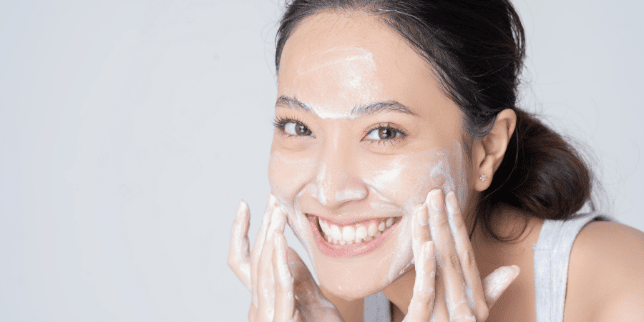
Step #1 – Cleanse Your face
Regardless of skin type, always start your morning skincare routine with a gentle cleanser.
It frees your pores of any impurities that have accumulated overnight. The cleanser will prepare your skin for absorption and hydration. Trust us – it is essential for keeping breakouts at bay and maintaining a radiant complexion.
This step seems obvious, but there are some tricks to getting it right. First, wash with lukewarm water. Hot water will dry out your skin and make it more prone to acne breakouts. Second, do not overdo it! Too much washing will dry out and irritate the skin.
We recommend using a gentle cleanser formulated for acne-prone skin or oily skin.
Read: 10 Rules How to Wash Your Face Properly to Prevent Acne
Step #2 – Apply Toner
After cleaning your face, the next step is to apply toner.
If you have large pores, toner can help shrink them. It balances the skin pH and removes any last traces of oil, grime, and impurities stuck in your pores and cause breakouts.
A mattifying toner is also a great way to remove excess oil after cleansing. Just make sure not to overdo it — only use one pump on a cotton pad, and only apply it in the areas where you have enlarged pores or extra shine. Otherwise, you might irritate your skin.
Step #3 – Moisturize Your Skin
Moisturizing your face after using a toner is essential because it helps replenish the skin’s natural moisture. If skipped, your skin becomes dry and flaky, and dryness leads to more breakouts!
Applying a moisturizer after toner helps seal moisture into the outer layer of your skin and prevents transepidermal water loss (TEWL). TEWL occurs when water evaporates from your skin, which causes dryness and irritation. It can also worsen acne flare-ups. That is why it is essential to maintain healthy levels of moisture in your skin by applying a moisturizer after toner.
Use an oil-free moisturizer. It can help prevent the formation of blackheads and whiteheads. The product will keep your skin hydrated without adding additional oils that could potentially clog your pores.
There are plenty of oil-free choices out there. Choose a gel or emulsion texture for daytime use, as they feel light on the skin.
Step #4 – Protect with Sunscreen
Dermatologists recommend the use of sunscreen every day to prevent sun damage.
Some people worry that the ingredients in sunscreen might cause breakouts. Well, dermatologists have good news for people who have acne and want to use sunscreen. Experts recommend a broad-spectrum, water-resistant sunscreen with an SPF of 30 or higher to avoid potential sun damage. Broad-spectrum means it protects against UVA rays and UVB rays. UVA rays can cause premature aging, while UVB rays can cause sunburns.
A water-resistant sunscreen stays on your skin longer when you sweat or swim.
The key here is to choose products labeled as non-comedogenic or oil-free. These products are less likely to clog your pores and cause those nasty breakouts.
Step #5 – Use Acne Treatment Products
Keep acne products as the last step of your skincare routine.
There is a lot of confusion about the best order for applying your skincare products, and it can get even more complicated when you add multiple active ingredients into the mix. So keep it basic and minimum as suggested by your dermatologist.
If you use retinol, it is best to apply it at night to avoid the sun because the sun can cause skin sensitivity. Retinol is a vitamin A derivative used to treat acne and wrinkles. It is available in various forms, including creams, gels, lotions, and serums.
Evening Acne Routine
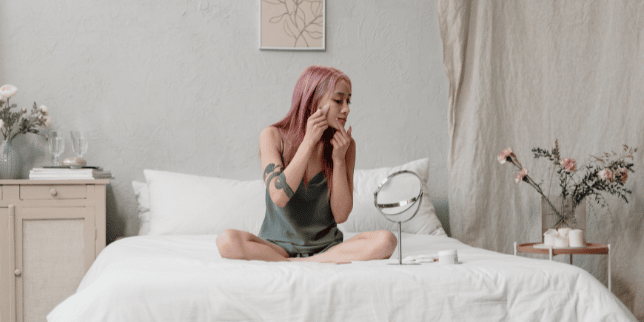
Step #6 – Double Cleanse Your Skin
If your skin is oily and you want to get all of your makeup off, it is possible only with double-cleansing.
Firstly use an oil-based cleanser, as it gets all of the oil and dirt from the day off your face. Then use the foam cleanser to get any leftover grime from your face.
To remove makeup, dirt, and oil, use a cleanser that can tackle all three. Make sure that you get every last trace of makeup off before moving forward to the next step.
Step #7 – Moisturize Skin Well
It is vital to use a moisturizer at night because as you sleep, your skin regenerates itself from all the damage it has acquired throughout the day from UV rays, pollutants, and bacteria. Moisturizing at night allows your skin to heal itself without any additional damage being caused by external factors such as dry air and cold weather.
A thicker cream is better for nighttime because it provides more intense moisture while you sleep.
Step #8 – Do Target Treatment
Opt for products with benzoyl peroxide or salicylic acid — both proven anti-acne ingredients.
Treatment products containing salicylic acid help keep skin pH maintained. Hence keep acne at bay. Plus, it is effective to use a benzoyl peroxide spot treatment only on active pimples.
It is preferable to use the target treatment at night because there is no such problem of using only invisible or rapid absorbing products at night time. However, do note that to use the products prescribed by your dermatologist.
Dealing with acne can be a bit of a task. Take your time, stay patient, and do not push yourself too hard to achieve a clear skin immediately! It is important to not rush with this regimen and to make sure you are cleansing and moisturizing every morning and night.

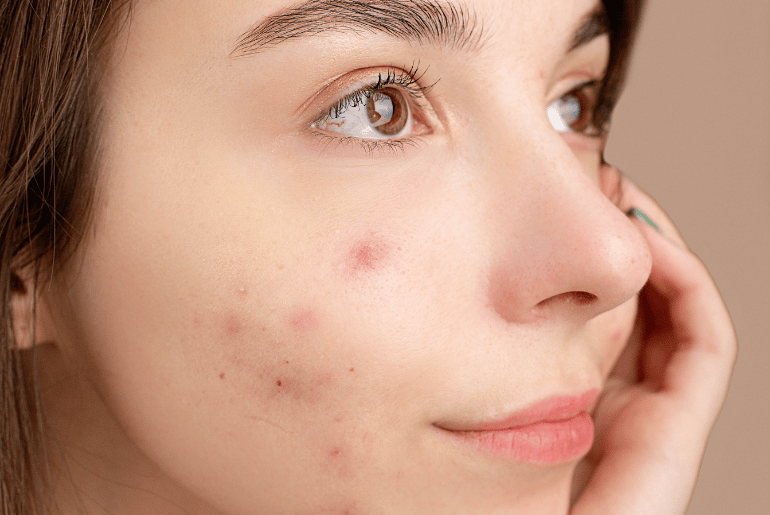

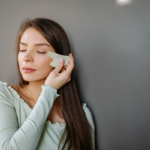
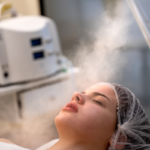
[…] Read: 8-Step Skincare Routine for Acne […]
[…] this is not necessarily a real problem, it can lead to acne breakouts if you do not know how to manage your skin properly. If you have an oily forehead, try following a […]
[…] Oatmeal is a great addition to your face mask because of its soothing and softening properties. If you combine it with milk, the lactic acid in it will give you smoother and clearer skin. If you’re not allergic to cinnamon, you can use it for its anti-fungal, antioxidant, and antibacterial properties. It is the perfect solution for acne-free skin. […]
[…] Read: 8-Step Skincare Routine for Acne […]
[…] harmful to your health, they can be unsightly and make your skin look and feel rough and uneven. Proper skincare can help to prevent and reduce the appearance of […]